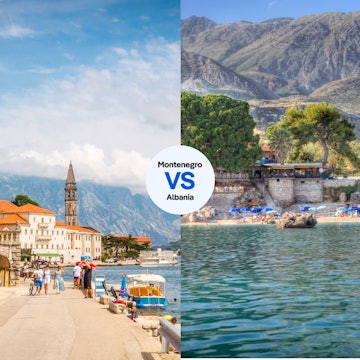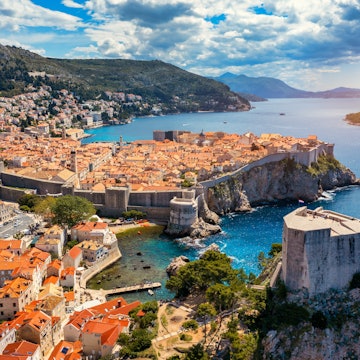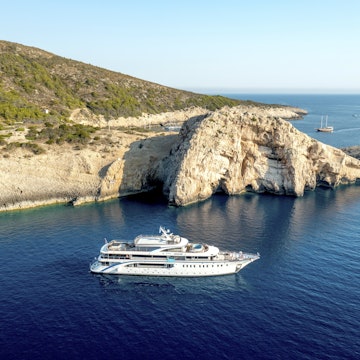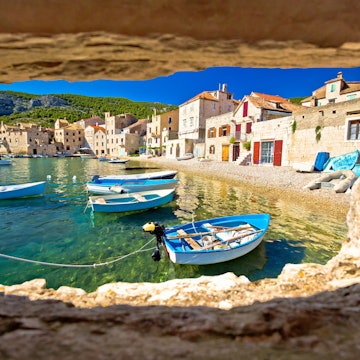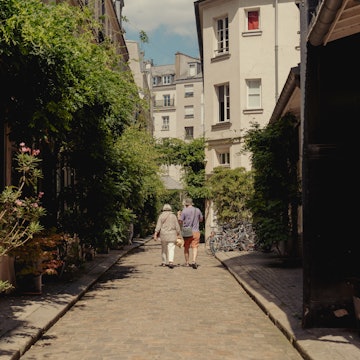

Dubrovnik. Vasylisa Dvoichenkova/Shutterstock
Tucked between a looming peak, Srđ, and the turquoise waters of the Adriatic Sea, Dubrovnik is a star among stars for its stunning natural setting and historic 13th-century Stari Grad (old town). Visitors gravitate toward the area encircled by the massive fortified city walls. Most of Dubrovnik's top sights are concentrated within this compact zone, which the majority of travelers tackle on foot.
Dubrovnik stretches outside these walls, reaching northwest along the coast, encompassing the resorts of Lapad and Babin Kuk on the peninsula and covering some 140 sq km (54 sq miles) in total. For trips further afield, public transportation is available to all corners of the city, including up to the main port of Gruž and across to Banje Beach in the east. And if you want to beat the crowds, boats offer completely traffic-free journeys.
Here are the best travel tips to get around Dubrovnik whether by foot, ferry, bus or car.

Walking in Dubrovnik
The best (and only) way to get around Dubrovnik’s old town is on your own two feet. Enclosed by its age-old walls, the Stari Grad is completely pedestrianized. The only motorized vehicles you may see are early morning delivery vans servicing shops and restaurants on the Stradun, the main thoroughfare.
Strolling the Stradun and the grid of narrow lanes and alleys that extend from it is a delight. However, the old town can lose some of its sheen when it gets impossibly crowded in the peak summer season, especially when cruise ships are in port. Check the Dubrovnik Port Authority website to see how many ships are due to dock on any given day. If you can’t avoid the most congested days, plan to wander around the old town early in the morning to take everything in at a slower pace. To get an idea of the density before you head out, take a peek at the live camera on the Stradun.
For a rewarding group tour of Dubrovnik’s old town or walks themed around topics such as Game of Thrones or walls and wars, book a guide with Dubrovnik Walks.
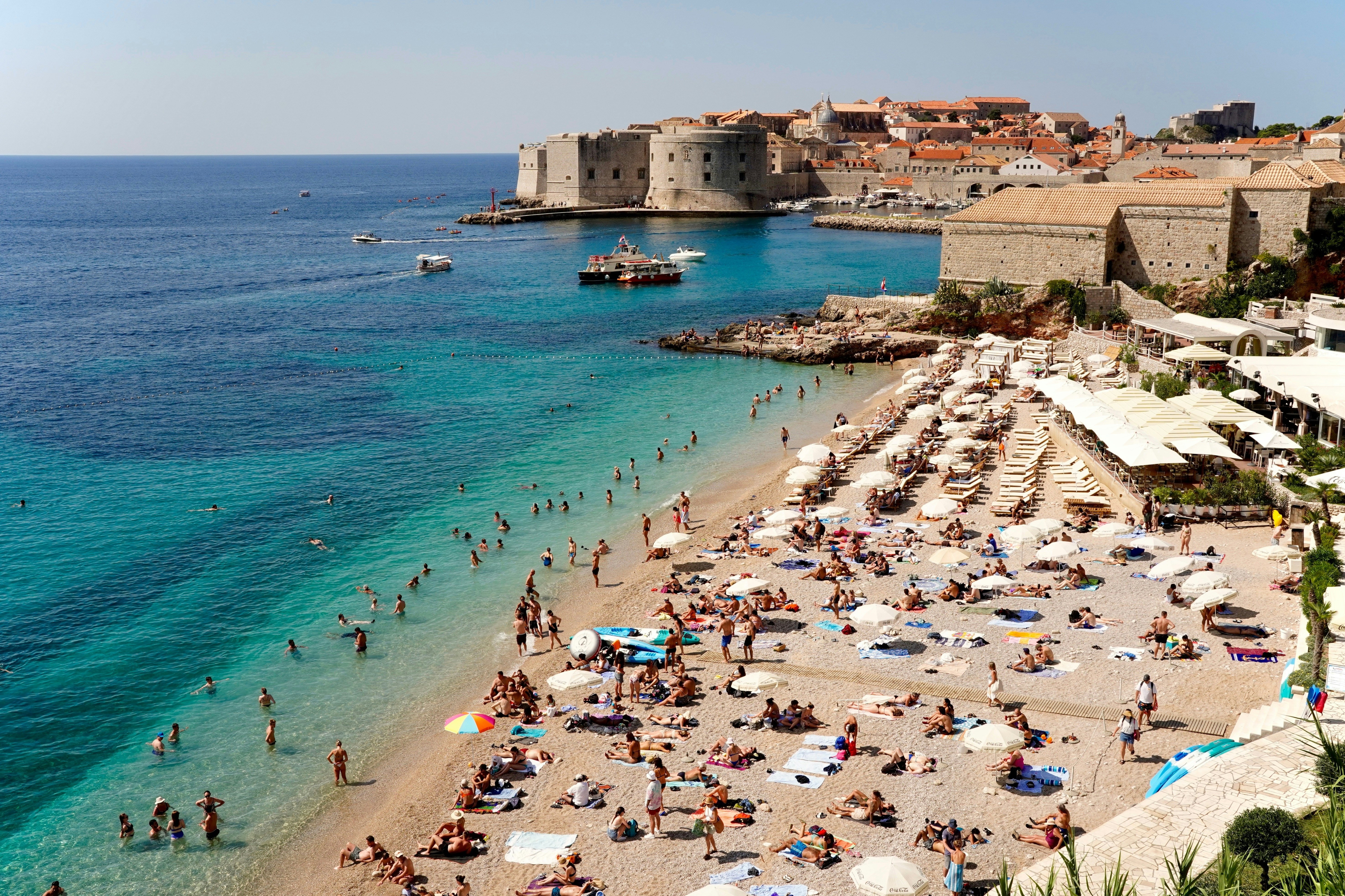
Using the Dubrovnik bus system
City buses are cheap and efficient
Dubrovnik is not just the Stari Grad. If you’re looking to take advantage of the city's many parks and beaches, and explore sights beyond the center, public transportation is a viable option. You can get around Dubrovnik easily on the excellent bus service operated by Libertas. Timetables are posted at most bus stops and on the Libertas website.
Many visitors make use of the regular services linking Pile Gate on the western edge of the old town with Gruž, where the main port and bus station are located, as well as the routes to the beach resorts of Lapad and Babin Kuk. Most bus lines run from around 6am to midnight. You'll need to pay €2.50 (US$3) to the driver (they don't have change), but you can save a few coins by buying one-hour tickets in advance at newsstands or the Libertas kiosk at Pile Gate for €1.73 (US$2). If you plan to use the bus more than twice a day, it’s worth making the small investment of €5.31 (US$6.15) for a 24-hour ticket. Once on board, validate your ticket by inserting it into the machine.
The Dubrovnik Card offers free city bus rides along with its free or discounted access to tourist sights, including the city walls. The €40 (US$46) pass is good for one day, €50 (US$58) for three days and €60 (US$69) for seven days. Wi-fi is free onboard Libertas buses – look for the Libertas Mediaking network, then follow the instructions to get connected.
Hop on a shuttle from the airport
Dubrovnik's airport is 22km (13.6 miles) southeast of Dubrovnik, near Čilipi. The drive to the center generally takes 30 minutes but can take longer during peak hours, especially in the summer. A private airport transfer shuttle operated by Platanus runs between the airport, Ploče Gate in Dubrovnik's old town and the bus station in Gruž for €10 (US$11.50).
A cheaper but less convenient option is to take local transport to the town of Cavtat, then one of the regular bus services to Dubrovnik; the bus stop for Cavtat is in front of the domestic arrivals terminal.
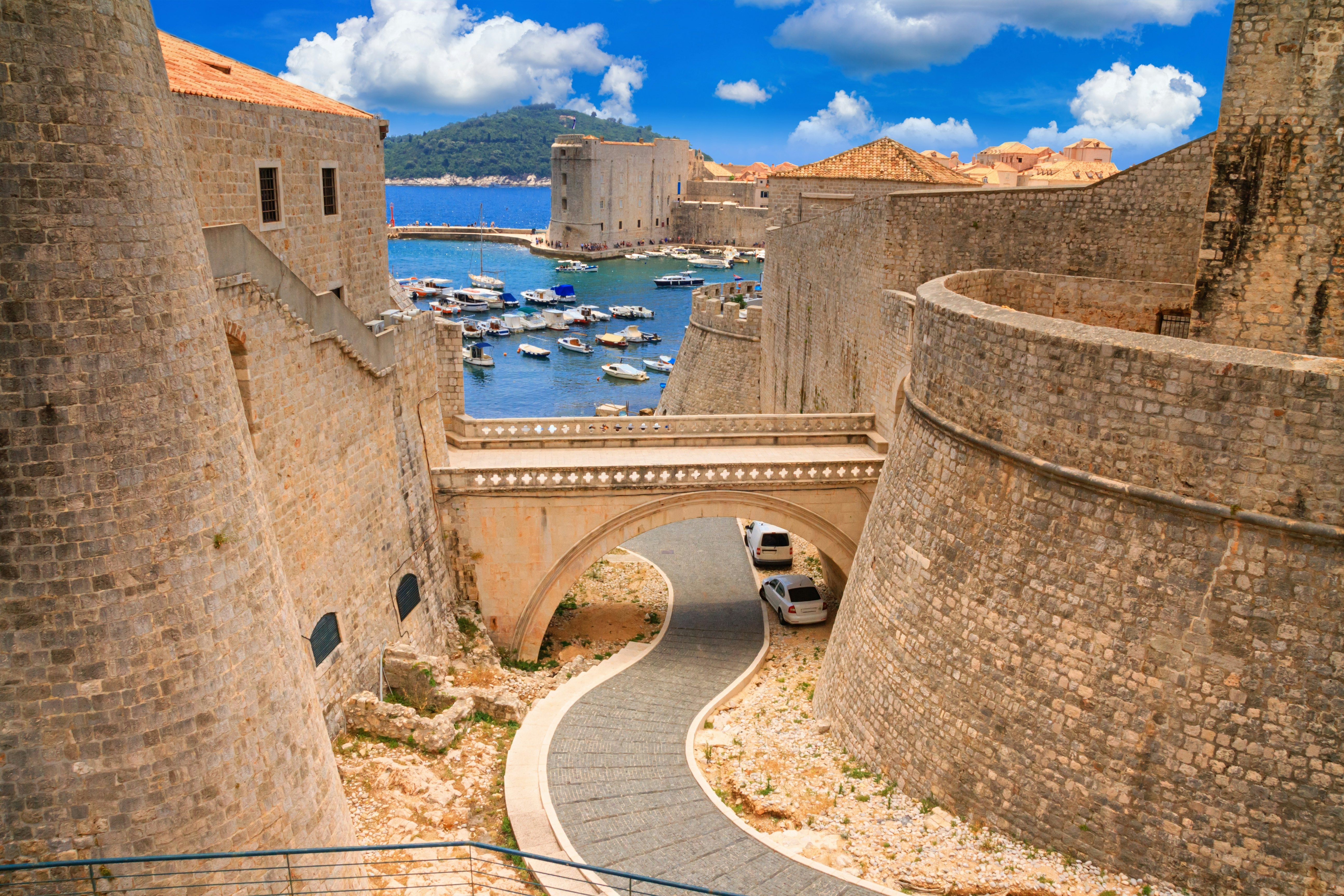
Driving in Dubrovnik
Practice patience to get around Dubrovnik by car
Be patient if you plan to get around Dubrovnik by car. The usual international companies have offices in town and at the airport, but traffic jams are common during the high season, and the city’s one-way street pattern is a big obstacle to the smooth flow of vehicles. The areas around Pile Gate and Gruž in particular are often congested with long lines of vehicles and tourist buses.
The covered parking lot at Ilijina Glavica is Dubrovnik’s biggest, with over 700 spaces, and it's open 24 hours. Pay €7 (US$8) per hour or €40 (US$46) per day. From here, you can walk downhill through leafy Bogišićev Park to the old town in 10 to 15 minutes, but the climb back up can take a bit longer, depending on how much energy you have after a day of sightseeing.
If you’re traveling to Dubrovnik on a budget, try the lot located next to Gruž harbor and take a public bus into town.
Taxis and rideshares are easy to find in Dubrovnik
Taxi ranks for licensed cabs can be found at the city's Pile and Ploče gates; check the large signs posted at each to see the rates and compare these with the prices for rideshare services like Uber and Bolt to see which is more pocket-friendly.
Getting around Dubrovnik by water
Bargain hard if you plan to explore Dubrovnik by boat
Private taxi boats are a great way to avoid the inevitable traffic jams during high season, and you'll feel like James Bond as you zip your way to the old town from the resort neighborhoods of Lapad or Babin Kuk. However, this convenience comes at a significant price. Private boat operators peddle their services from kiosks at the old town harbor and Gruž harbor, but you may have to negotiate intensely for an acceptable price.

Board ferries to reach nearby islands
A dedicated boat service runs every half hour to the forested island of Lokrum, with the fare included in the price of admission. Buy a ticket at the kiosk on the pier in the harbor in Dubrovnik's old town; timetables are on the Lokrum website.
Another popular service for visitors is the ferry to the nearby Elaphiti Islands (Lopud, Šipan and Koločep) departing from Gruž port. Head to the Jadrolinija office near the departure pier to purchase a ticket or book online.
You can also get to the coastal city of Cavtat along the Adriatic coast. Adriana Cavtat offers regular boat transfers (as well as private cruises) during the high season.

Trying alternative transportation in Dubrovnik
Take the cable car up to Srđ
Dubrovnik’s cable car dates back to 1969, and when it opened, it had the proud status of being the first cable car in the Adriatic. The original cableway was destroyed in 1991, but its replacement once again links the old town with the 778m (2552ft) Srđ peak in under four minutes. The cable car runs from April to October, giving sweeping views of the old town and the sparkling waters of the Adriatic and its surrounding islands.
Rent a bicycle or e-scooter
It’s rare to see cyclists or e-scooter riders navigating Dubrovnik’s hilly streets, and the city doesn't have a sharing system for either. However, both bikes and scooters are available for rent from private operators; look for advertisements at the Dubrovnik Tourist Board office next to Pile Gate.
Accessible travel in Dubrovnik
Narrow city sidewalks and the old town’s side streets of uneven stones and steep stairways can be a real challenge for travelers with mobility issues. Unfortunately, the city walls can only be reached via a steep set of stairs. Newer hotels have been designed with accessibility in mind, but many older properties do not have elevators.
The city’s public bus system is accessible for wheelchair users and others with limited mobility, but not all buses have ramps or kneeling devices. The cable car can be accessed by everyone, thanks to ramps and elevators. Wheelchairs and mobility scooters are available for rent across Croatia from MB Scooter Croatia.








